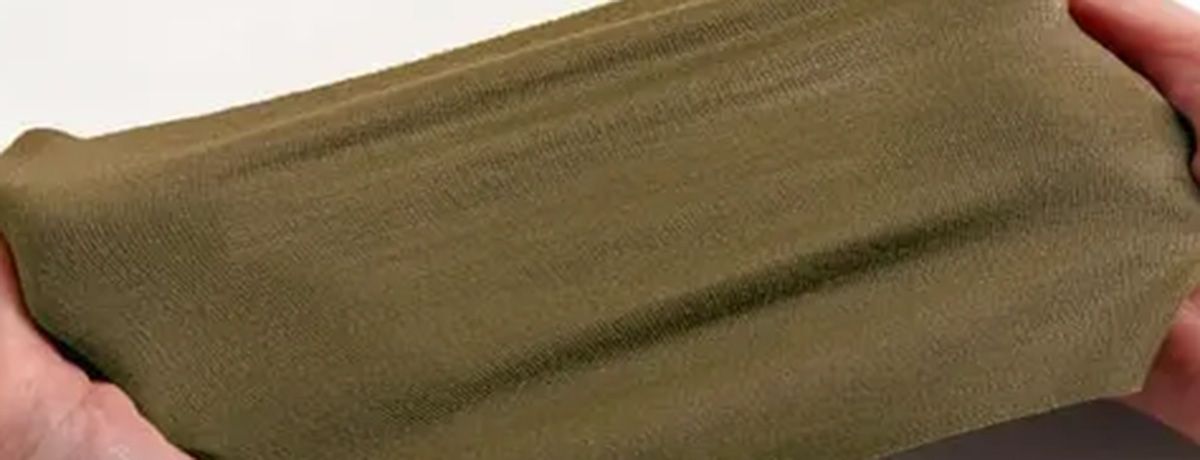Fabric Stretch: A Guide for Manufacturers and Textile People by the Yard

Stretch fabric has changed the textile game with its awesomeness. Flexible, durable and breathable stretch fabric is used in many industries from fashion to home textiles. It is perfect for making fashionable apparel, including athletic wear and costumes. This guide is for garment manufacturers, textile traders and wholesalers to get to know stretch fabric types, applications, sourcing and industry trends. If you want to be ahead of the textile game, this is the blog for you.
What is Stretch Fabric?
Stretch fabric is fabric that stretches and recovers. It does this with the help of materials like spandex or elastane which allow for flexibility. Stretch fabrics are used in industries that require comfort, movement and durability.
Properties of Stretch Fabric
-
Elasticity: Can stretch and recover without damaging the fabric.
-
Breathability: Keeps wearer comfortable in all conditions.
-
Durability: Wear and tear resistant, built to last.
-
Versatility: One way stretch and four way stretch options available.
Stretch fabric is loved for its functionality and style, that’s why it’s a favourite in both garment and textile industry.
Types of Stretch Fabric
The variations in stretch fabric come from the material used and the stretch it offers. Below are the most common types.
1. Spandex/Elastane
Also known as Lycra, this is the most well known stretch fabric.
-
Properties: High elasticity, lightweight, durable.
-
Applications: Activewear, swimwear, sportswear due to its flexibility and strength.
2. 4-Way Stretch Fabrics
These fabrics stretch both ways, vertically and horizontally.
-
Examples: 4-way stretch knit fabrics, 4-way stretch nylon spandex fabrics.
-
Applications: High performance garments like yoga pants, sports leggings, fitted dresses.
3. One-Way Stretch Fabrics
These fabrics stretch one way, usually crosswise.
-
Uses: Structured garments like skirts and fitted tops where moderate elasticity is enough.
4. Blended Stretch Fabrics
Stretch fibers blended with other fabrics like cotton, polyester, nylon, or rayon for added functionality.
-
Examples: Stretch denim, stretch jersey.
-
Applications: Everyday wear like jeans, T-shirts, athleisure.
By knowing the types of stretch fabric, manufacturers and traders can choose the right one for their needs.
Applications in Garment and Home Textile Industries
Garment Industry
The versatility of stretch fabric makes it a go to material for garment production. Stretch fabric is ideal for sewing a range of items such as dresses, pants, and athleticwear.
-
Activewear: Brands use 4-way stretch fabric for comfort and performance.
-
Formal Wear: Stretch fabric creates tailored suits and dresses that move with you.
-
Lingerie & Undergarments: For the perfect blend of comfort and fit.
Case Study
A sportswear brand used 4-way stretch fabric in their designs and saw 35% increase in sales due to its flexibility and breathability.
Home Textile Industry
Stretch fabric is also used in home textiles for unique solutions for comfort and durability. Stretch fabrics come in various colors, including trendy options like silver, which are popular for home décor projects.
-
Bedding: Stretch fabric is used in fitted sheets and mattress covers for a snug fit.
-
Upholstery: The stretch provides durability and a smooth finish.
-
Decorative Items: Stretch fabric is used in slipcovers, cushions and curtains for custom fit.
Example
A home textile manufacturer added stretch fabric in their upholstery line and got a premium market position.
Sourcing and Buying Guide
For garment manufacturers and textile traders, buying stretch fabric by the yard requires careful thought.
Tips to Buy
-
Identify your needs: One way stretch or 4-way stretch?
-
Suppliers: Work with suppliers who sell stretch fabric at competitive prices. Look for specialized fabrics like 4-way stretch knit fabric by the yard in various colors like orange for precise customization.
-
Test Samples: Always ask for fabric samples and test for comfort, elasticity and durability before bulk ordering.
Sources
-
Local Wholesalers: Quick availability and lower shipping cost.
-
Online Textile Platforms: Specialized platforms have wide range of stretch fabric.
-
Spandex Manufacturers: For custom orders for specific designs.
Quality Checks for Stretch Fabrics
Quality is key for durability, elasticity and customer satisfaction.
Parameters to Check
-
Stretch Recovery: Does the fabric go back to its original shape after stretching.
-
Seam Strength: Do the stitches hold under stress.
-
Composition Analysis: Is the fiber blend consistent and good.
-
Color Fastness: Does the fabric fade when washed or exposed to sun.
By checking thoroughly you can make sure your garments and textile products meet customer expectations.
Trends and Innovations
The stretch fabric market is changing with new technologies and designs.
Today
-
Sustainable Stretch Fabrics: Growing demand for eco-friendly options like recycled spandex and organic cotton blends.
-
Advanced Printing: 4-way stretch fabric prints are getting popular for unique and vibrant designs.
-
Smart Textiles: Responsive fibers that adapt to temperature and movement.
Tomorrow
-
Bio-based Elastic Fibers: Scientists are developing synthetic stretch fibers from natural resources.
-
3D Printed Stretch Fabrics: This is whole new level of customization.
Stay ahead of the curve.
Stretch Fabric is Form and Function
Stretch fabric is a must have in both garment and home textile industry. Its uniqueness in flexibility, durability and adaptability makes it a valuable resource to create high quality products as per customer requirements.
If you are a garment manufacturer, trader or home textile producer looking to buy stretch fabric by the yard, get in touch with suppliers now. Unlock the power of stretch fabric for your business today.
